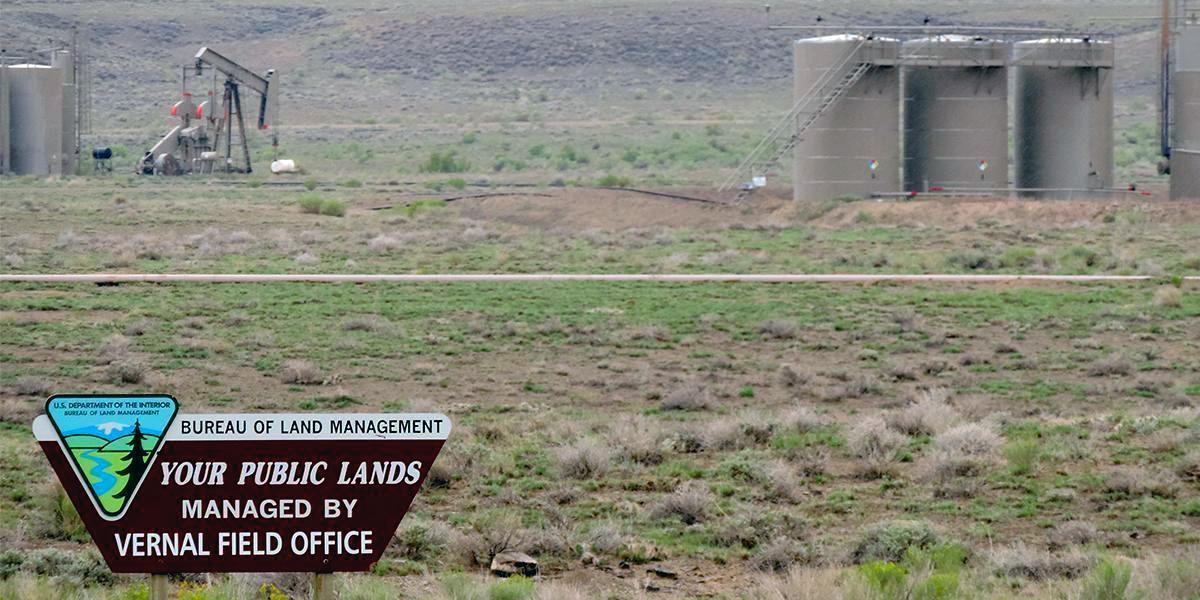
Taxpayers Charged $7 Billion a Year to Subsidize Fossil Fuels on Public Lands

The federal government is providing extensive support for fossil fuel production on public lands and waters offshore, through a combination of direct subsidies, enforcement loopholes, lax royalty collection, stagnant lease rates and other advantages to the industry, a report released Wednesday found.
The government is contributing at least $7 billion per year in subsidies to support fossil fuel production on federally held lands and offshore waters alone, and is holding some $35 billion in public liabilities for drilling in public waters of the Gulf of Mexico. These subsidies support increased fossil fuel production on U.S. lands and waters out of step with efforts to meet international climate objectives.
The report, released by Oil Change International in partnership with 350.org, WildEarth Guardians, Center for Biological Diversity, Clean Water Action, Food & Water Watch and Public Citizen, for the first time outlines in detail the subsidies and other public support being provided in the U.S. to the fossil fuel industry for its activities on public lands.
The report, Unequal Exchange: How Taxpayers Shoulder the Burden of Fossil Fuel Development on Federal Lands, presents an accounting of the minimum amounts of direct taxpayer dollars going to support fossil fuels on public lands, not including externalities such as climate and health impacts, which would bring the totals even higher. If those factors are taken into account, for example, mining coal in the Powder River Basin alone would have a net cost to the U.S. public of some $17.8 billion per year as of 2015.
“Rex Tillerson and other members of the Trump administration deny that these subsidies even exist just like they deny climate change. The reason is clear—in both cases, if you admit the truth, the only answer is a managed decline of the fossil fuel industry,” said Stephen Kretzmann, executive director of Oil Change International.
“The first step towards that is to stop supporting the industry with our public dollars. These subsidies are a raw deal for American taxpayers, and a disaster for our climate.”
Particularly notable is a finding that some royalty and lease rates for fossil fuel development on public lands have remained unchanged since the 1920s.
“As if simply allowing the toxic, climate-killing extraction of fossil fuels on our sensitive public lands isn’t shameful enough, that the federal government actually subsidizes this foolish activity with taxpayer money is downright absurd,” said Wenonah Hauter, executive director at Food & Water Watch.
“For the sake of climate stability, the transition to a clean energy future must begin immediately. An ideal place to kick-start the transition is with a ban on fossil fuel extraction on our precious public lands, and most certainly, a halt to the underhanded propping-up of this antiquated industry with our precious public dollars.”
The report makes a number of key recommendations, starting with a basic determination that the fossil fuel leasing program on public lands should be phased out in line with climate science. Until that become reality, the report finds immediate action to reduce large, unfunded liabilities for U.S. taxpayer money associated with fossil fuel production on public lands should be reduced and royalty and lease rates should be increased to better reflect the full costs to the public of these activities.
“This report makes it clear as day that the Trump agenda is the fossil fuel billionaire agenda,” said Jason Kowalski, policy director at 350.org.
“The industry finances corrupt politicians, who in turn help them keep fossil fuels economically viable at a time when the science suggests most oil, gas and coal needs to be kept in the ground. They set out to rig the system and they succeeded. History will judge them harshly.”

 233k
233k  41k
41k  Subscribe
Subscribe 
